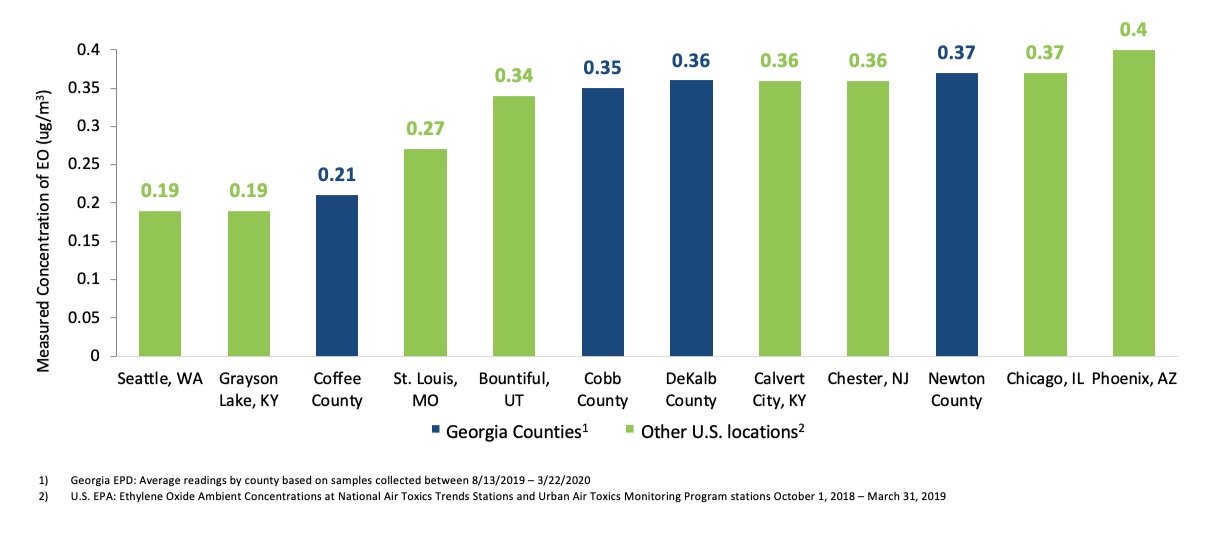Ethylene Oxide (EO) Exists Naturally and Comes From a Variety of Sources
Ethylene oxide (EO) exists naturally in the air all around us at “background levels” found across the country
Natural sources of EO include the human body’s normal metabolic process, plants and microbes
Everyday sources of EO include vehicle exhaust, natural gas combustion, home furnaces, gas grills and agricultural chemicals
EO is primarily used to make other chemicals, not in the sterilization of medical products. EO and its derivatives also help make or supply a variety of products we use every day:
EO is Essential to the U.S. Health Care System
Hospitals and patients depend on sterilization for critical and lifesaving products
Billions of medical products and devices are used every day, and they must be sterile before use to ensure the safety of patients and health care providers
EO is the only sterilization method that satisfies FDA-approved sterility validations for many critical medical devices
The method of sterilization is determined by FDA sterility requirements and the medical product manufacturer based on the materials and the design of the product being sterilized – Sterigenics does not determine which sterilization method to use
For many medical devices, sterilization with EO is the only method that effectively sterilizes and does not damage the device during the sterilization process
Medical devices made from certain polymers (plastic or resin), metals, or glass, or that have multiple layers of packaging or hard-to-reach places (for example, catheters) are likely to be sterilized with ethylene oxide
Georgia Background EO is Similar to Measurements Across the Country
EO Concentrations Measured in Georgia and Across the Country (ug/m3)
EO Levels Found in Georgia are Normal and Safe
“…around the country we're finding what we're calling background levels even though there may not be a [EO] source nearby, of 0.1 to 0.3 micro grams of ethylene oxide in a cubic meter of air..”
- Ken Mitchell, EPA Region 4
“In my opinion, I would consider a 24-hour concentration in the range of 2-5 micrograms per cubic meter to be minimus or insignificant to that effect. If we were to detect a concentration of 10 times higher than that, a 20-50 micrograms per cubic meter… I still do not consider those levels to pose a significant increase in cancer risk, even if we were to detect those every day.”
- Lucy Frasier, Cobb County Air Quality Oversight Committee Toxicologist
“…we see that in residential areas surrounding the [Sterigenics Atlanta] facility, the emissions from Sterigenics are within the range that the Clean Air Act directs us to when evaluating safety.”
- Mary Walker, U.S. EPA Region 4
The Georgia Department of Public Health reviewed the zip codes adjacent to Sterigenics’ facility and did not find “any evidence of increased incidents of cancers… that have been known to be associated with ethylene oxide.”
- Cherie Drenzek, Georgia Department of Public Health





